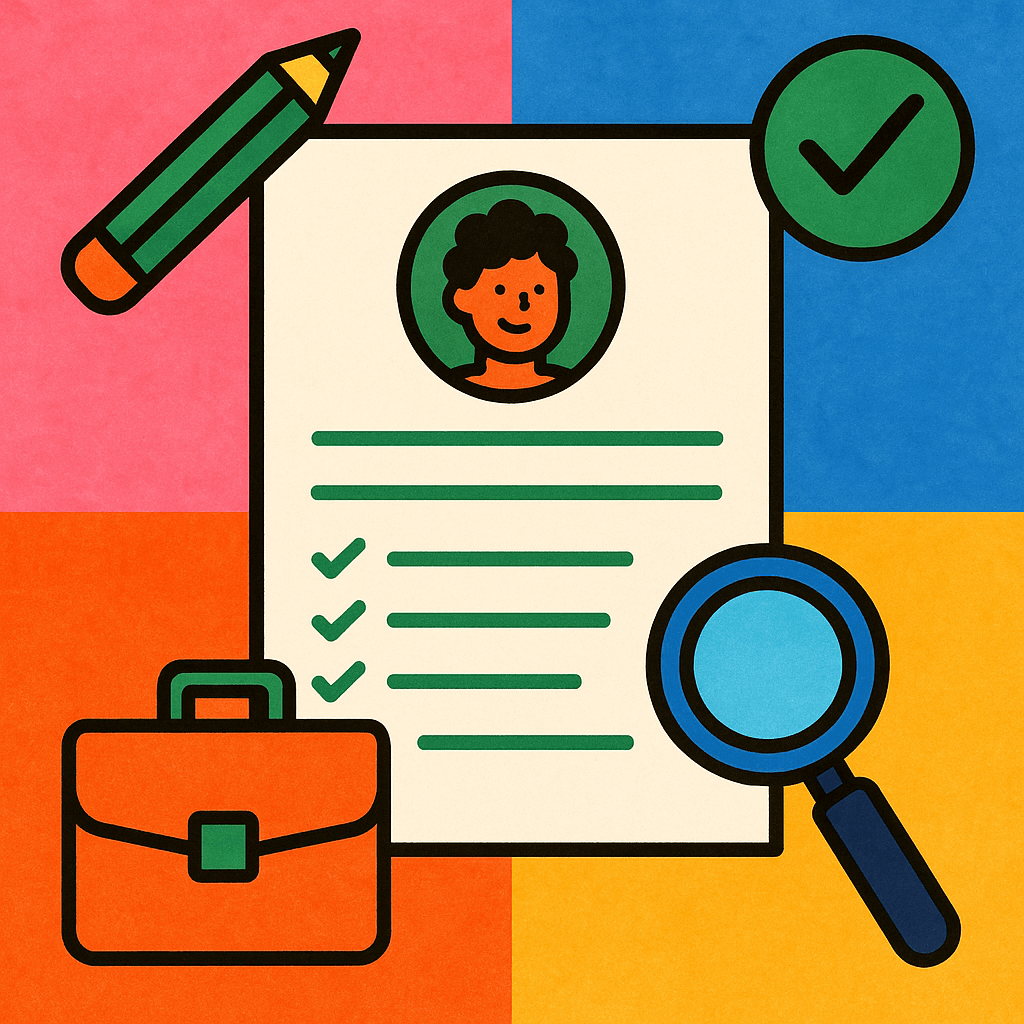It’s necessary. It’s a little old fashioned. It’s your résumé (known hereafter as resume, because it’s easier.) Think of it like your ticket to hop on the train to your next job. It doesn’t have to be fancy, it just needs to be good enough to get you to the next stop: the interview.
Here’s how to make sure yours does the job.
Start with a template
You don’t have to, but it’s a nice shortcut. Microsoft Word has built-in templates, there are many free options available with a quick Google search, or even fancier ones available from places like Etsy.
Keep in mind some industries (like design or tech) may expect slightly different formats, but these tips will work great for most jobs.
The Top Section: Keep It Clean and Clear ✅
✔️ What to include:
- Your name
- A “headline” that reflects the job you want, not just what you’ve done.
- City and state
- Phone number and email address
- LinkedIn profile (Pro tip: customize that URL!)
- Personal website or portfolio, if relevant (this can help bring your achievements to life)
✖️ What to skip:
- Outdated “Objective” sections
- Cringe email addresses (Gmail is free!)
- Full street address
Write a Summary That Says, “Hire Me” ✅
Recruiters might only spend 10 seconds on your resume. Put the good stuff right at the top. Use short sentences or bullet points to highlight:
- How many years of experience you have
- Relevant tools/tech you’ve used
- A standout accomplishment
- Contextual extras (e.g. remote work, industry experience, team leadership)
Work History: Show What You Did — and Why It Mattered ✅
List your roles in reverse-chronological order (that’s most recent to oldest.) For each one, include:
- Company name, location
- Your job title (pro tip: adjust your job title slightly so it aligns with standard job titles and will be immediately understood, just don’t inflate it!)
- Dates (Month/Year)
- A few bullet points showing what you actually did and why it mattered
✖️ Bad version:
TestCorp Inc
Customer Service Ninja
01/30/2012 – 05/21/2015
- Answered emails from customers
- Completed assigned projects
- Trained new team members
✔️ Better version:
TestCorp Inc (Boston, MA)
Customer Service Specialist
01/2012 – 05/2015
- Resolved 30 tickets/day on average with a 98% satisfaction rating, highest on the team
- Completed assigned projects, including a new system that increased satisfaction by 5%
- Appointed to train 5 new team members.
Education: Keep It Simple ✅
- College grads: you can skip listing high school.
- 10+ years out? No need for dates or GPA.
- Only list GPA if it’s brag-worthy.
- You can also include relevant non-degree courses or certifications here.
Pro tip: If you have less work experience, or a really impressive degree, you could think about putting this section higher.
Other Sections to Add (if relevant) ✅
- Certifications
- Technical or specialized skills
- Language abilities
- Up to you, but if there’s anything that really makes you unique or memorable (but still professional) go ahead and add it!
Common Resume Mistakes to Avoid 🚫
- Overstuffed pages — early-career folks should stick to one page, 2-3 is OK if you’ve been at it a while.
- Fancy colors or graphics (save those for your website)
- Keyword stuffing or white-text hacks (ATS systems are smarter now)
- Spelling your own name wrong (seriously, double check)
- Skip “References Available Upon Request” or listing reference details. They’ll ask when they need it, so create a separate document for that.
Final edits
- Use tools like ChatGPT to help tighten up wording, just don’t let it rewrite your whole life. We don’t recommend copy/pasting a complete resume, just use it for review.
- Ask a friend to review (they’ll catch things you missed)
- You can also hire a resume pro for a small fee on LinkedIn, Fiverr, or elsewhere if you’re stuck.
- If you think of improvements later on, it’s ok to update it, too.
Putting it to use
Now that you’ve got a solid resume, you’re… done? Not quite. You’ll get better results by tweaking it for each job:
- Match language from the job ad (“Operations Project Manager” > “Consultant” if it fits)
- Reorder achievements so the most relevant appear first
- Add in missing but relevant skills or experience
- Save the file as a PDF and name it: “YOUR NAME – COMPANY – JOB TITLE”
Pro tip: Upload your completed resume to Linkedin or other career sites that offer it, it’ll help if people are looking for your skillset. If you’re heading to an interview in-person, it’s also handy to have a printed copy, just in case.
Writing a resume isn’t the most fun you’ll ever have, but it is one of those “functional human” skills that pays off big. Keep it honest, keep it clear, and remember: your resume doesn’t have to be perfect. It just has to open the door.
You’ve got this. And if you don’t? We’ll help.
